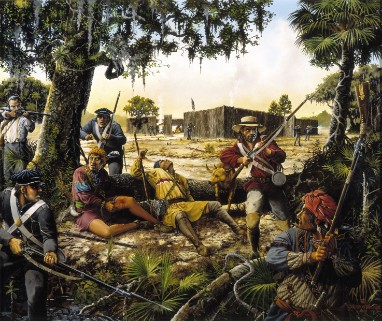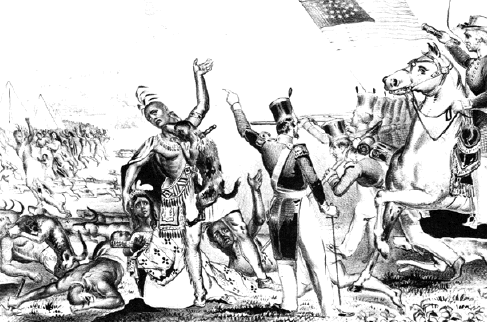 Citrus County, Florida -- April 1836  |
Andrew Jackson's campaign in the First Seminole War (1817-1818) did not succeed in subduing the Floridian natives. By the terms of the Treaty of Paynes Landing (1832), the Seminole were supposed to migrate west of the Mississippi River within 36 months. For that reason there leader Osceola had resisted to move, Osceola was briefly imprisoned. A few months following his release, he commenced attacks on the Americans. On December 28, 1835 Osceola murdered Indian agent Wiley Thompson. The same day, Major Francis Dade and his U.S. soldiers were ambushed by 300 Seminole warriors near Fort King. By 1837, the Seminole apparently had managed to force a truce. During negotiations, however, Oceola was arrested and confined first at Saint Augustine, then Fort Moultrie at Charleston, South Carolina where he died on January 30, 1838. His people fought on against the Americans.The Second Seminole War proved to be the most expensive of the Indian Wars in which the United States was involved. It cost the lives of thousands of Seminole and 1,500 U.S. soldiers, as well as more than $30 million. |